Jordan Carlyle and his husband Mario Margelist have style savoir-faire. Carlyle is the founder and principal of the New York-based studio Carlyle Designs; Margelist is known for Lux, an ultra-high-end consignment shop. Yet when they first saw their future home, a 5,000-square-foot farmhouse in East Hampton, it wasn’t love at first sight. Built about twenty years earlier, the façade was a mix of early colonial and Georgian references. Inside: a lot of fiddly trim and wide old floorboards — salvaged from an old farmhouse in Vermont, it turned out — which someone had stained an unlovely reddish-brown hue. Still, he and Margelist were taken by the abundance of natural light which shone through both sides of the house, and the land: the property was set amid woodlands (much of them protected, the couple would later learn).
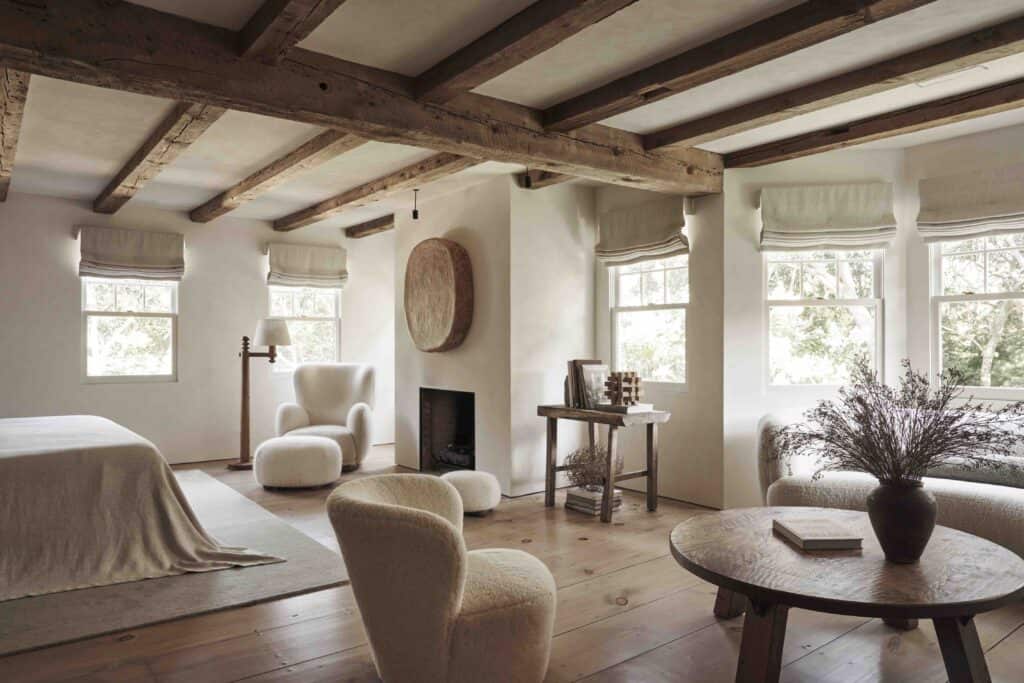
“Even though the house was the opposite of what we wanted in terms of finishes, there was something about it that was so beautiful and charming,” Carlyle says. And so they arranged to buy the place and determined to make it their own.
“My husband was certain that since the exterior was traditional he didn’t want traditional interiors. And I thought, OK, that’s a good direction to go in. We’ll juxtapose the certain old elements with contemporary ones.”
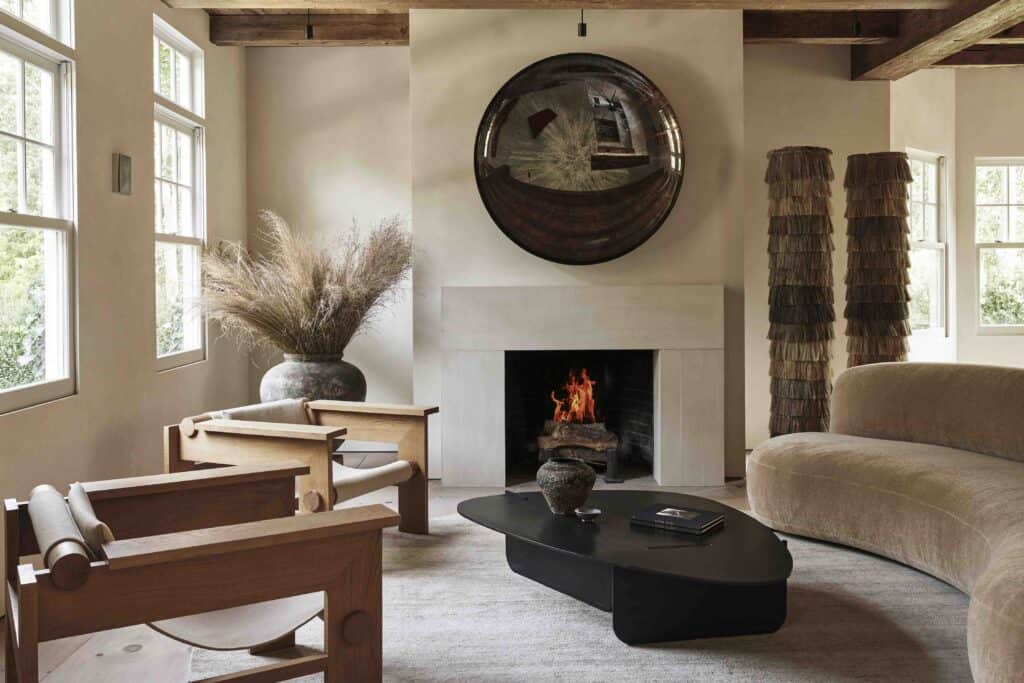
By ‘contemporary’ Carlyle didn’t mean shiny, bright-colored, and lacquered. On the contrary, he decided to pare the structure back to its essence, doing away with every last bit of frippery. Consequently, one of his first — and boldest — moves (once he’d bleached those reddish floor boards) was to remove all the ornate molding and trim and plaster the walls throughout. “It was a big decision,” Carlyle says. “I’m influenced by art and I’ve always loved that super-minimal gallery look in which the walls appear to float above the floor.”

Rooms that could have come across as chilly in the hands of a less skilled designer now exude warmth and personality. Carlyle achieved this effect by tempering the more minimalist aspects of the redesign with tactile fabrics like mohair and a subdued color scheme. He also incorporated deep-textured antique finishes such as the tumbled antique bar gris limestone flooring in the kitchen, sourced from France. (“I don’t like to make something old from new materials,” he notes.) It’s the sort of addition that looks just right, as if it’s always been there. And unlike new limestone, the centuries-old pavers “feel so much better underfoot,” Carlyle says, “because of their wear and tear. We installed radiant heat but we hardly ever switch it on. The floors stay warm even in winter.” The kitchen countertops sinks are also made of limestone, which he finds is less prone to etching and staining than white marble is.

Other winning moves included plastering the staircase which connects the main level to the bedrooms. “Whenever I asked myself how to make the house really clean and simple, I kept returning to our design concept. This wasn’t going to be a traditional Hamptons house so rather than design a staircase with iron and wood spindles we did what we wouldn’t normally do.”
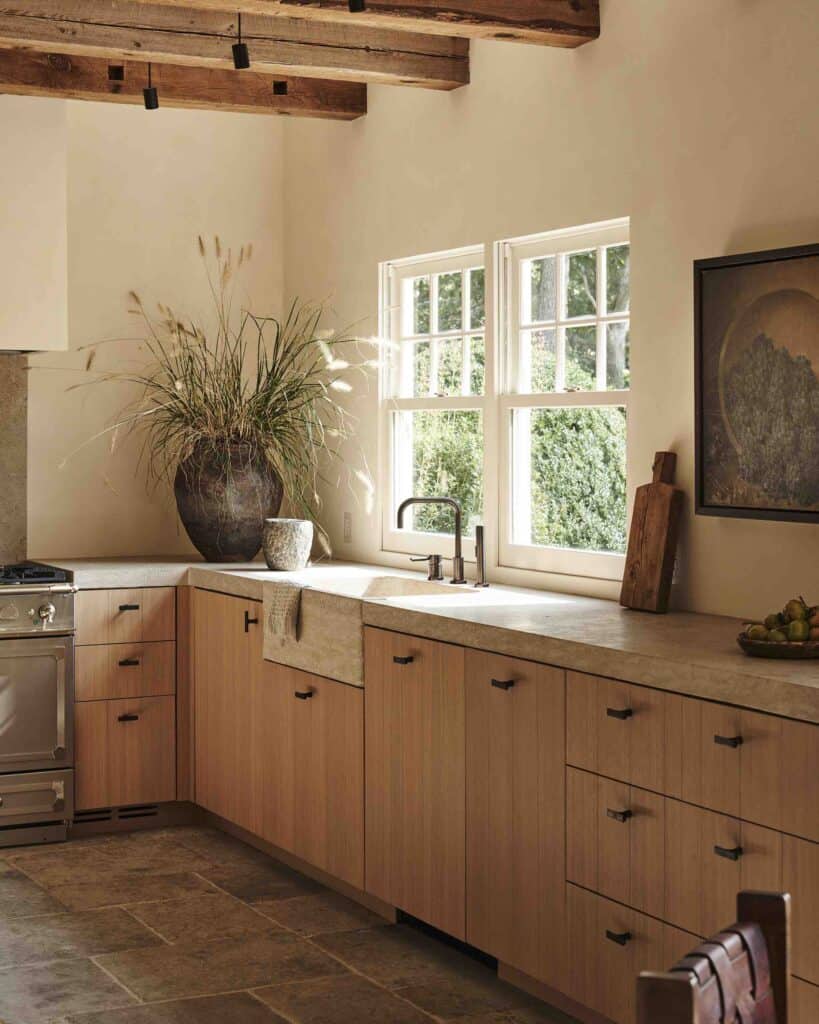
The interior architecture provides the backdrop for a considered mix of contemporary artworks and vintage and contemporary furniture. Carlyle selected curvilinear sofas from the 1950s, tables in biomorphic forms, and sculptural seating (a Fritz Hansen chair in shearling is a favorite), a rustic old sideboard from Spain, and pieces of his own design.
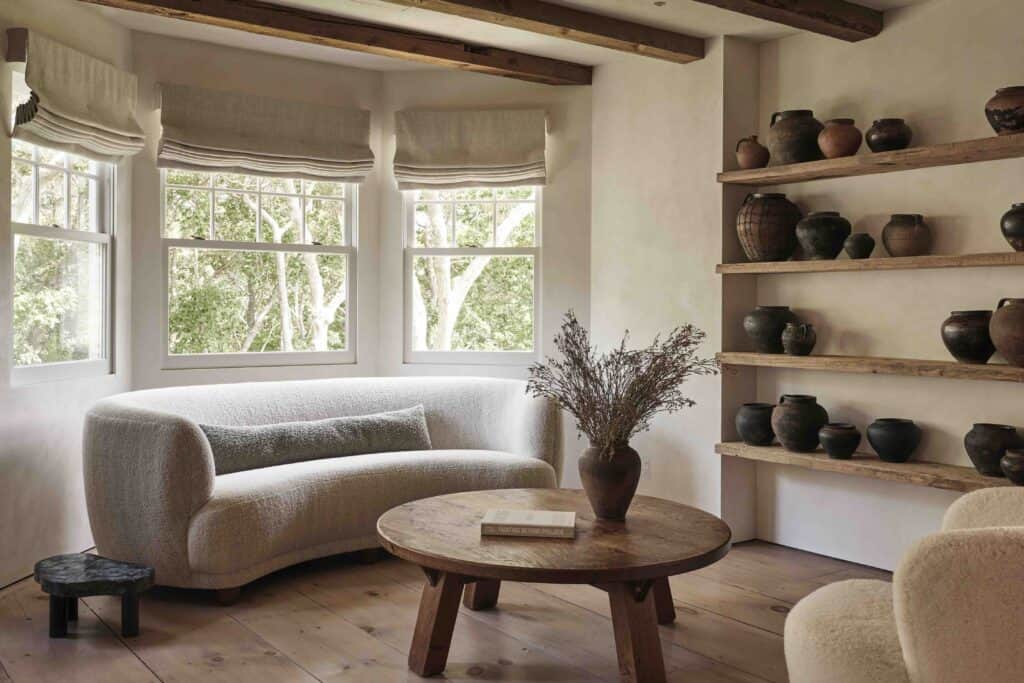
Over the course of the project, Carlyle and Margelist had a series of pleasant surprises. “There’s light on the pool from seven in the morning until seven in the evening — but we didn’t learn that until we cleared away the trees in back.” And there was one more surprise: Carlyle’s discovery that he was his own dream client. “Even when you’re working for someone who trusts and believes in you, your decisions, ultimately, are influenced by how that person will use the home,” he reflects. “But when you design a house for yourself, you get to create exactly what you envisioned. It’s all yours.”
Photography By Adrian Guat







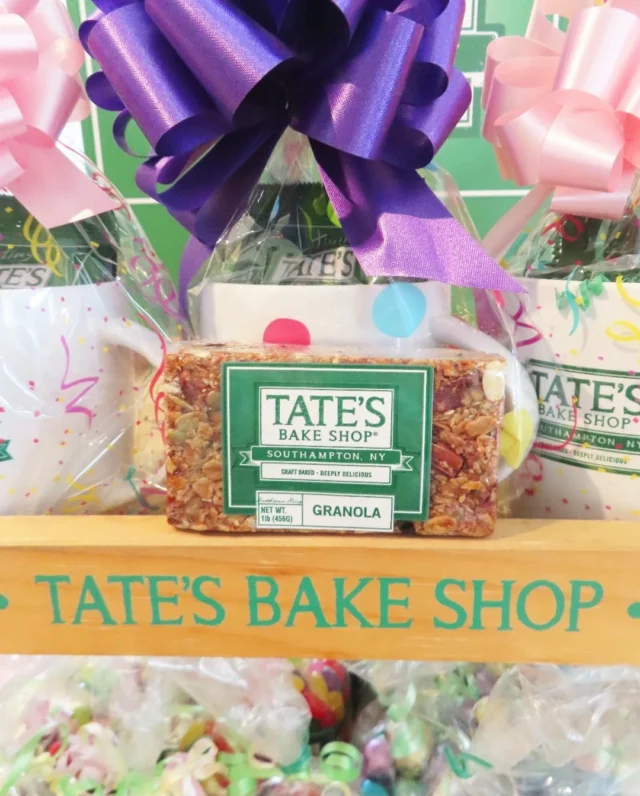
![Tuesday, April 15, was Tax Day for most, but for someone in Palm Beach, it was closing day! The nearly 8,00± sq. ft. Mediterranean-style residence at 240 N Ocean Boulevard, with direct ocean views and a private, 100-foot beach parcel, closed at exactly $26,670,750. The seller was represented by Jack Rooney of @douglaselliman and Elizabeth DeWoody of @compass while Dana Koch of @thecorcorangroup brought the buyer. [link in bio]](https://hamptonsrealestateshowcase.com/wp-content/uploads/sb-instagram-feed-images/491445351_18505056166030135_4907944420436119099_nfull.webp)
![Previously featured on our 2024 Columbus Day issue cover, 74 Meeting House Road has officially sold! This stunning new construction in Westhampton Beach offers the perfect blend of thoughtful design and timeless style. Congratulations to @kimberlycammarata of @douglaselliman who held the listing! [link in bio]](https://hamptonsrealestateshowcase.com/wp-content/uploads/sb-instagram-feed-images/491441951_18504901357030135_2664904795600183799_nfull.webp)
![Located South of the highway in Southampton this 4 bedroom, 5.5 bath multi-story property, offers extensive exterior architectural detail throughout. 60 Middle Pond Road offers breathtaking views and tranquil living, nestled along the serene shores of Middle Pond and Shinnecock bay. Represented by @terrythompsonrealtor @douglaselliman. [link in bio]](https://hamptonsrealestateshowcase.com/wp-content/uploads/sb-instagram-feed-images/491451873_18504686110030135_5284427082339135969_nfull.webp)
![Introducing a rare opportunity in the heart of East Hampton Village South: 18 Egypt Close. This exquisite property was meticulously renovated a decade ago, nestled on a lush builders’ acre, blending modern luxury with timeless elegance. Represented by The Hamptons Group of @thecorcorangroup. [link in bio]](https://hamptonsrealestateshowcase.com/wp-content/uploads/sb-instagram-feed-images/491439291_18504471214030135_4957995907041134776_nfull.webp)
![Once the temporary home of architectural legend Frank Lloyd Wright—who lived here while designing the Guggenheim Museum—this extraordinary corner residence at 1 Central Park South transcends the typical Manhattan luxury offering. This 4,000± sq. ft. masterpiece within the Plaza Hotel has returned to market asking $18.9M. [link in bio]](https://hamptonsrealestateshowcase.com/wp-content/uploads/sb-instagram-feed-images/490259326_18504258406030135_5203375842768220403_nfull.webp)
![Chef and bakery owner Karoline Cerqueira has Hamptonites hooked on her dreamy confections, flaky croissants, fruit tarts, and pies that taste like grandma made ‘em. Filled with golden light and the warm scent of fresh baking goodies, @windmilllanebakery provides the perfect backdrop for this pretty Easter tablescape designed by @kdhamptons. [link in bio]](https://hamptonsrealestateshowcase.com/wp-content/uploads/sb-instagram-feed-images/490362407_18503819719030135_8660900959925874834_nfull.webp)

